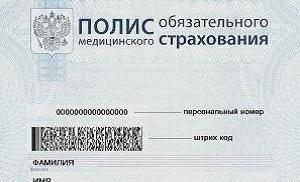Evidence-based medicine. Vasily Vlasov, vice-president of the Society of Evidence-Based Medicine: “We saw the face of the Ministry of Health, and it supports homeopathy. President of the Society of Evidence-Based Medicine, Vasily Vlasov
The speech of the Minister of Health and Social Development of the Russian Federation Tatyana Golikova at the beginning of this year at a meeting of the Presidential Council dedicated to demographic policy issues was commented on by the vice-president of the Society of Evidence-Based Medicine Specialists, Doctor of Medical Sciences, Professor Vasily Vlasov.
Fertility
“AiF”: – Vasily Viktorovich, in the last two years we have seen some population growth, and the Ministry of Health takes credit for this.
Vasily Vlasov: – Population is determined by mortality, birth rate and migration. The mortality rate in our country, unfortunately, remains quite high and still exceeds the birth rate. The population is increasing slightly due to migration. For some reason, we generally believe that migration is bad for the country. But the United States, for example, accepts hundreds of thousands of migrants and only flourishes from this.
“AiF”: – Since 1999, there has been a slight increase in the birth rate...
V.V.:– ... due to the fact that the number of women of reproductive age has increased. Plus, “maternity capital” worked. People hastened the birth. But this may be precisely an acceleration, and not an increase in the birth rate: women can still give birth to one child, but do this not at 30, but at 27 years old. And then the number of young women will decline and the birth rate will fall.
“AiF”: – The Ministry reports: since 1991, the number of abortions has decreased by more than 2 times.
V.V.:– There are fewer abortions – that’s good. The availability of contraceptives has increased, and new ones have appeared. But while the number of abortions is declining, the number of births remains stable. The question arises: is it possible to limit access to abortion so that the birth rate increases? There are two sides to the discussion of this issue. The first is not medical. Attempts to ban abortion are based on the view that a woman is not a person, but a carrier of a uterus in which a person grows. This is categorically unacceptable; a woman should have freedom to control her body. Second, there is no evidence that banning abortion leads to an increase in the birth rate. But it has been proven that the ban on abortion leads to an increase in maternal mortality, many times over and in a very short time.
New technology
“AiF”: – Another contribution of medicine to demography is the birth of children using IVF. Some in vitro conceptions are funded by the state.
V.V.:– In my opinion, financing IVF from public funds is very stupid.
"AiF": - What about stupidity? And other countries do this.
V.V.:“We have very little money in healthcare. While there are many problems that can be solved relatively cheaply. Therefore, the most important task is to solve the problems that are bleeding, using available means.
“AiF”: – Where didn’t they give the money?
V.V.:– Oncology. In our country, at best, a quarter of cancer patients receive adequate treatment. Three quarters do not receive it. Although they should be provided with full treatment from the federal budget. We still do not provide chemotherapy to patients with drug-resistant tuberculosis. In our country, most people whose kidneys fail do not receive hemodialysis. They die within a few months. We have virtually no transplantation...
From a demographic point of view, IVF is nothing. From the point of view of spending precious healthcare resources - over 373 thousand rubles to “receive” one child - this is simply stupid.
Dubious initiative
“AiF”: – The Ministry proposes to evaluate the reproductive function of each citizen already in adolescence. I think this is terrible.
V.V.:“When our Minister of Health announced this, the remaining hair on my head stood on end. I thought it was a slip of the tongue. No, the ministry has already ordered the development of a method for assessing reproductive function at great expense. Although in reality today there are no ways to evaluate it. For example, when they say that a marriage is infertile, they do not use laboratory tests, but the fact that a man and a woman have been sexually active for a long time, but pregnancy does not occur. This is the only criterion for determining an infertile marriage. A man may have terrible sperm quality, but if his wife has two pregnancies and two children within 5 years, this marriage is not considered infertile. Even if the wife gave birth to these children from a neighbor.
“AiF”: – I’m shocked at the thought that all the boys at school will be forced to masturbate in a test tube?!
V.V.:– Well, yes, there is no other way to evaluate sperm! And then let’s imagine that some Petya actually has poor sperm quality. Nothing can be done about it. But Petya grows up knowing that he has defective sperm!
“AiF”: – And the whole class will know it!
Social problems
“AiF”: – In Russia, maternal mortality is 320 cases per year. Although the decline in this mortality rate is most likely due to global medicine, it is declining everywhere.
V.V.:– Maternal mortality depends on many factors that need to be described in non-medical terms. For example, if people live in normal homes and eat normally, then women are healthier, they have fewer infections... If medical care is available, it means that a woman, when she experiences pregnancy complications, will not die from these complications. Reducing maternal mortality is about more than just good maternity facilities. This is mainly a social problem.
“AiF”: – Of course, we must fight for every life, for every unit in this number of 320, but, on the other hand, in our country 500 thousand people a year die from the consequences of alcohol, 400 thousand from the consequences of smoking.
V.V.:- Yes, this is what you need to do. And we have already shouted about this a hundred times. In Russia, men live 20 years less than in Western Europe, and the gap is not closing yet.
Around the medical examination
“AiF”: – Clinical examination is considered useful. And you claim that there is no need to test everyone for everything.
V.V.:– Clinical examination is a very expensive system, and it was never implemented, it was only proclaimed on paper. Meanwhile, identifying diseases if there is no way to treat them is immoral. If a person has a growing tumor that we cannot treat, it should not be detected under any circumstances. If we do not identify it, then the person, for example, lives carefree for another three years. And if we detect this cancer in him and do not treat him, then from the moment of detection he becomes dying.
In addition, medical examinations have another disgusting quality: when they begin to examine healthy people, they make a huge number of false diagnoses. You've probably heard this statistic: About one in three people receiving medical care is being treated for a disease they don't have. He either has another disease, or no disease at all. This is data from foreign studies. This is the situation when providing routine medical care, but when providing assistance based on an early diagnosis, it is much worse!
“AiF”: – No matter what specialists we interview, everyone says that the disease must be identified as early as possible, then something else can be done.
V.V.:– This is a plausible opinion that has never been proven scientifically. Based on scientific evidence, we can determine when early diagnosis is needed and when it is not. For example, it is necessary to examine stool for occult blood. Colon tumors can be treated well. This cheap and effective test is not included in our clinical examination program. But there is no need to test blood to detect prostate cancer in men. This test produces many false positives, and all men who are treated for prostate cancer are subject to traumatic treatment that adds little to their life expectancy.
Treat effectively
“AiF”: – What measures, in your opinion, can improve the demographic situation?
V.V.:– Construction of kindergartens, protection of women’s career growth, preservation of their jobs while they are on maternity leave, all sorts of benefits, parental capital...
The quality of our life depends not only on medicine, but also on social conditions. Among purely medical measures, it is necessary to mention the availability of effective treatment. Only it increases life expectancy.
The main thing is that the population is healthy and happy. The mere fact that there will be not 140 million of us, but 180, will not add happiness to each of us.
The Russian reaction to the development of the severe acute respiratory syndrome (SARS) epidemic in the world is increasingly reminiscent of panic. Eastern regions are urgently closing their borders, sanitary and epidemiological services are issuing orders to disinfect everything, medical officials with enviable pathos are declaring full combat readiness... At the same time, a different kind of revival has arisen - you can rush in and make money on panic by offering “life-saving” devices, medicines, disinfectants . How justified is this fuss, does the real scale of the threat correspond to the movements of the authorities, are the recommendations of specialists appropriate with such scant information about the nature of the disease? There is only one coordinate system that allows you to answer these questions. This is evidence-based medicine based on rigorous scientific data. A well-known expert in the field of evidence-based medicine, director of the Russian branch of the Cochrane Collaboration (an international organization of scientists that summarizes the results of all scientific clinical trials in the world), Doctor of Medical Sciences Vasily VLASOV answered questions from columnist Tatyana BATENEVA. - Following the experts of the World Health Organization, our experts recommend treating SARS with specific medications, which are very expensive. But while WHO gives recommendations carefully, with reservations, ours are more specific and categorical. What is this confidence based on? - On nothing, or rather, on the reasoning that theoretically these drugs could be useful. But now that medicine is armed with drug testing methodology, treatment options must be determined scientifically. That is: we don’t know how to treat it, but we can suspect that antiviral drugs need to be used. This means that we take the three most probable ones and begin to treat patients according to a random sample: some with this, others with that, etc. Thus, we will find out which is the most effective. But, unfortunately, they treat with whatever comes to mind, so today no one can say that these drugs really work. - But do experts know what and how approximately can act in this or that disease? - Exactly, they have ideas that some medications affect the microorganism, and some affect the patient’s body, so that it becomes stronger and resists viruses. But in reality, a healthy body cannot be made stronger. Now, if children in Africa, who are very poorly nourished, lack vitamin A, then it is enough to give them one capsule of the vitamin per month - and soon their resistance to infections sharply increases. If a child does not have a clear vitamin deficiency, it is almost impossible to increase his resistance to infection. All these popular ideas that you need to drink kefir, “cleanse your intestines,” eat multivitamins, douse yourself with cold water - and you will become healthier, unfortunately, have no scientific basis. - So, it makes no sense to use immunomodulators in the treatment of SARS? - No, there is some truth in this. Because among the people who end up in hospitals, there are always many who have insufficient nutrition and unfavorable living conditions. These deficits must be filled. But the problem is different: in such a situation, there are always a lot of people who want to sneak in “their” drugs on the quiet. There are many such drugs (supposedly immunomodulators), but in reality there is no evidence of their usefulness. - On what basis do experts confidently recommend specific antiviral drugs for the treatment of SARS, since the nature of the virus has not yet been fully clarified? - One gets the impression that these drugs are recommended only because they have been tried. What their actual effectiveness is is not reported. Therefore, now in Canada and Hong Kong, where the scientific base is sufficient, normal tests will begin - patients will be treated according to the rules of evidence-based medicine. Considering that the disease is acute and widespread, such a study can be performed very quickly, literally in 3-4 weeks. - What are tests “by the rules”, who determines these rules? - These rules were developed by modern evidence-based medicine, and they are quite simple. We have a question: does this medicine help or not? We know how to get the answer. For example, if just 10 people were treated with some drug and said that their flu was going well, this is not a result. Because the flu goes away on its own, and the best known drugs reduce the manifestation of its symptoms by just one day. It is necessary to compare one with the other. For example, the seller may offer you paint as white. But you cannot be sure of its color until you compare it with a standard white paint. And then you can see that it is not white at all, but yellow or gray. Our experience allows us to see something only when we compare. - Should we compare the medicine with a placebo, that is, a dummy, or one medicine with another? - Different comparisons lead to different conclusions. Why are placebos traditionally used? In relation to a huge number of medical interventions, previously we simply did not know whether they worked or not. To answer this question, it was necessary to compare them with nothing. A placebo is nothing. Placebos can only be used for research purposes - if we do not treat the control group with anything at all, they may feel inferior and begin to treat themselves with the same or other drugs. And the results will be unreliable. The second rule of “good” trials is randomization, that is, random sampling of patients, literally by drawing lots. Because if we don't do this, there may be only young patients in one group, old patients in another, wealthy patients in one, poor patients in another, our friends in the group receiving a promising drug, and everyone else in another. ... And this will also affect the result. - From the standpoint of evidence-based medicine, what do the authorities’ efforts to prevent the importation of SARS into us look like - closing borders, disinfecting transport, measuring the temperature of all those arriving from China and other measures? - It is almost pointless to carry out disinfection with a bleach solution in buses and trolleybuses in Moscow. Firstly, bleach is terribly ineffective: it is useful for a limited time, it is toxic, and it has little activity against viruses. Secondly, it is generally impossible to carry out disinfection for the future until the presence of the virus in transport, roughly speaking, has not been proven. Disinfection is the killing of infection. No infection - no killing. - Then why is all this being done? - According to the favorite principle of officials - “don’t stand there like a fool.” Measures to close the border can be assessed in the same way. It doesn’t matter whether there will be 10 crossings on the border with China or one. Because if there is contact between people, the infection will be brought. It is possible, of course, to completely interrupt this contact, but this will have catastrophic consequences both for our Far East and for northern China. As far as we know, no other country in the world closes its borders. You can, of course, filter and identify people with fever at airports. But when a person becomes infected, a latent stage usually occurs, when it is not yet clinically manifested. There is no fever, runny nose, or cough yet, but there is already a lot of virus in him, and he releases it - he sneezes, talks, and at the same time small droplets of saliva with the virus fly out. No thermometry, no thermal imagers will be able to identify such people. In addition, even after recovering, a person can remain a carrier of the virus for the rest of his life and excrete it. Another problem is erased forms. Typically, the number of mild and erased forms of any viral disease is many times greater than the number of severe ones. - So, you can do nothing at all and “humbly wait for the end”? - Why? The most reasonable thing in this situation is to educate the population, explain how to behave in case of certain symptoms, how to protect themselves from infection. And spending a lot of money on measures that are obviously ineffective is hardly wise.
Evidence-based medicine is medical atheism.
A modern doctor must adhere to the best scientific evidence, otherwise he is a charlatan.
Synonym: evidence-based medicine; “evidence-based medicine” (literally: evidence-based medicine), "EBM", "science-based medicine".
What is this
Vasily Vlasov: What is evidence-based medicine
An evidence-based approach to medical practice involves the use of therapeutic, preventive and diagnostic actions with proven effectiveness, which involves searching for information, comparing, conducting research and meta-analyses. Efficiency is proven Not own experience or personal opinion.
In a narrow sense, this means the medical practice of an individual doctor, when he uses in his work only what he has high-quality evidence base of effectiveness (to this Not own experience and personal opinion belong, they are put in last place - when everything that has been proven is over or the case is extraordinary, then personal experience will do). It is clear that objectivity itself is subjective, especially in medicine, but personal experience is more subjective than anything else, so it is treated as such.
The approach to treatment based solely on experience and impressions is called “impressionistic medicine.”
EBM is based on clinical epidemiology, which studies the spread of disease and designs clinical trial methodology so that it leads to evidence-based conclusions while minimizing random and systematic errors and participant ownership. The main spanner in the hands of clinical epidemiologists is corrupt rubbish statistics, which allows you to systematically observe phenomena in a mass of people, describe all this in numbers and divide by zero by one hundred percent, using clinical trial methods (designs) that allow you to avoid systematic errors.
In general, this is a set of principles for refuting or confirming scientific data.
How it works
Control
For each study of anything, it is necessary to set a reference point so that the results have something to compare with: if something is 30% better, then we need 0% to understand what is better. Outdated protocols assumed zero to be a simple control group that simply did not take the drug/was not clinically tortured; this has now been rejected: how do we know that the study group is exactly experienced the effect from the drug, and didn’t you invent it through self-hypnosis?
To eliminate the effect of self-hypnosis, the control groups were fed useless drugs. Now both the study group and the control group eat tablets that are identical in weight, shape, color, and taste, but some have an active substance inside, and some do not. In cases where no one knows, this is called blinding: the experimental subjects don’t know (single-blind), the doctors don’t know (double-blind), even the nurses don’t know, the commission processing the results doesn’t know (triple-blind).
A placebo has no effect on the body; it can be not only a pill, but also harmless magnets from the refrigerator, flashing lights or fake acupuncture, depending on what is being studied.
Recently, control is often carried out not with a placebo, but with conventional treatment (already approved and tested many times), in cases where patients cannot be left completely without treatment. Then one group is given standard therapy, and the other standard + study, and the differences are compared.
Significance
What are systematic reviews?
Each study must have confirmation of its conclusions in a mass of similar ones, otherwise practical conclusions cannot be drawn; There are crowds of experts to analyze and evaluate articles, who ultimately issue clinical recommendations (guidelines) to mere mortal doctors based on the best evidence. When studying works, it is necessary to strictly separate process indicators (any changes in parameters) and indicators of the result itself (they are the ones that have clinical significance) to which those changes lead. When reading publications or arguing with a supporter of a method, one must adhere to this division, since it is not difficult to show the effect of a possible factor on the process, but finding out a reliable result and its positive connection with that factor requires serious work.
Research work can be classified into one type or another according to the weight of evidence, which depends on its structure (by reducing the slope):
- Systematic review through meta-analysis: the ceiling of evidence at the moment, nothing cooler has yet been invented (except perhaps a meta-analysis of meta-analyses): a pack of similar clinical trials of one method is taken, their common and different parameters are calculated, the agreement/discrepancy of the results is analyzed. The benefit of the method is that it provides higher statistical sensitivity (power) than individual tests, especially when they contradict each other. One of the significant values of meta is that seemingly similar studies have different authors, time and place of conduct, as well as different samples, which almost eliminates the possibility of bias (see below).
- RCT (randomized clinical trial, "RCT"): a pillar of evidence designed specifically to distinguish between what was due to exposure and what was due to chance. It consists of dynamic observation of preventive/diagnostic/therapeutic interventions that are applied to randomly formed (randomized) groups from a specific sample of patients. All possible factors have the same effect on experimental groups, only in one it will be a completely placebo effect, and in the second it will be the direct effect of medical intervention, from which the first can be subtracted and crystallized reliability in the form of confirmation/refutation of the original hypothesis can be obtained.
- Population (prospective, cohort, longitudinal) study: two groups of the population (cohorts), for example, those exposed to a risk factor and those not exposed to it, are identified, then they are observed for a long time, examined and the data are compared. It is used to determine the prognosis and causes of diseases, their risk factors and incidence rates, which is very labor-intensive due to the need for large samples (new cases of diseases may be too rare) and the duration of observation of these large groups.
- Analytical cross-sectional study: used to assess the effectiveness of diagnostics, the prevalence of outcomes and the course of diseases in almost real time - in fact, it is a slice of the database according to some criteria.
- Case-control study (retrospective): an archive of case histories is taken and run through statistics, which allows one to obtain relatively accurate data (without external influence - after all, all observations occurred before the analysis), on the basis of which it is quite possible to put forward a hypothesis. Simple, fast and cheap, but prone to frequent systematic errors due to inaccurate samples or poor quality of case descriptions themselves.
- Case series description: widely used, but essentially the same "many years of personal experience", which has very little evidentiary value, because if a person wants to see something, then he will see it the first, tenth, and thousandth time. In reality it is suitable for descriptive statistics, but in practice it is vilely exploited by money makers and opponents of EBM.
- Description of individual cases - someone noticed something and wrote an article. Useful for casuistry, but makes no sense in describing global problems and drawing serious conclusions, because Any individual case does not carry reliability in itself. Of course, the description of rare cases is extremely important for expanding the nosological boundaries, but it is wrong to build hypotheses based on them.
Evidence
Rating to show which substance really evaporates, which manipulations actually lead to a significant effect, and which are crap and reflexology.
Identified by letters (clinical trial result level):
- A - steep double-blind RCTs on large samples and systematic reviews with a high methodological level, s;
- B - systematic reviews of cohort studies, small RCTs, especially with conflicting results;
- C - non-randomized studies: case-control studies, systematic review of similar case-control studies (the basis for fuflomycin);
- D - series of observations, individual cohort studies, expert opinion/group of experts, laboratory data.
And in numbers (class of evidence of accepted recommendations):
- Class I: Evidence and/or general agreement that the diagnostic/treatment modalities are benign, useful, and effective.
- Class II. There is conflicting evidence and/or opposing opinions regarding the usefulness/effectiveness of treatment.
- Class II-a. Most evidence/opinion favors usefulness/effectiveness.
- Class II-b. Usefulness/effectiveness lacks sufficient evidence/conclusive opinion.
- Class III. Evidence and/or general consensus suggests that treatment is not beneficial/effective and, in some cases, may be harmful.
Special expert bodies decide on the level of evidence: the World Health Organization, The Cochrane Collaboration, the Society for Critical Care Medicine, the British Medical Journal and many others. These same organizations create guidelines - manuals for doctors.
Please note: here Not patient opinions on the topic are taken into account “And I took it and it helped me!” or decrees like “the boss/professor said.”
Demons
"Bias" ( baes), it's the same bias, or systematic errors- This is actually what evidence-based medicine should fight through RCTs and meta-analyses. A study with a good design, a large sample, a well-written protocol, adequately selected measured outcomes, and fully published results (including reports of past and current participant participation) brings the rate of such errors closer to zero. It is impossible to list all the baes; their number tends to infinity:
- Errors of representativeness (“selecting bias”) - arise due to incorrect samples and can only be eliminated by proper selection of inclusion criteria and randomization.
- Patient bias (“reporting bias”) is an improvement reported by a person, which in reality does not exist, but I really want to show it, because he is being treated and spending money/time. Not necessarily intentional, the very fact of participating in the experiment affects the well-being of the subject, this is called the Hawthorne effect.
- Registration errors (“bias of an estimator” or “positive bias”) - researchers are also pleased when their treatment works, and it doesn’t matter that the patient hesitates with the answer - we interpret it as “helped”.
- Interest (“funding bias”) - in the amount of sponsorship money or the researcher’s own vanity.
Of course, even taking all this into account and obtaining a high-quality result, we have to take into account non-modifiable, non-specific and work-independent factors: for example, the fact that diseases have a limited period of peak severity of symptoms, which will decrease without treatment - many diseases are cyclical or even self-limiting (which is convenient for the development of “anti-cold” drugs - during the observation period, all patients are guaranteed to recover). When using the second control group (which does not even receive a placebo, but simply stands in line for treatment), improvement can also be found there.
Even global Precautionary bias is described.
Birth of supernovas
Since dishonest comrades need something to cover up their incompetence, they get behind enemy lines and use the tools of evidence-based medicine for other purposes. Given this, you should approach any scientific work in general with caution, especially when they claim something fundamentally new, be it a medicine or a diagnostic method. If you do not analyze the quality of work and do not check the repeatability of the results, then you can easily fall under the influence of the following methods of earning money and a name.
- Fuflomycins: the description of a series of cases is best suited for their development - it seems to be scientific (people will fall for it), and they are clean before the law. This is how “evidence of the effectiveness” of pseudo-arbidol drugs is born: a pharmaceutical company invites a hungry Russian professor on a date, together they come up with a placebo with the desired properties, and then begin to push it into every sufferer, fortunately the professors have heaps of them. Of course, if not in every first case, then in 95% of patients, the desired positive “effects” of the drug will definitely manifest themselves, and so, meet: “Five-year experience of using fuflomycin. A series of clinical cases. Prof. Zalupkin G.Y.”. If you can't find fault, you'll have to buy it.
- Bullshit scientists: in order to get involved in the scientific community, you can start by describing individual cases - precisely because of the lack of reliability and verifiability, this very last point is loved more than others by various kinds of charlatans: it’s enough to write a pamphlet about a single observation, and voila - you’re already a scientist. Sadly, this is what 99.9% of dissertations rest on.
This is how everything works, and therefore in our country you can find local RCTs according to their own, not international, but local standards, developed specifically to promote the new barbidol, in which it is permissible to recruit 8-15 people (compare with the usual 1500+ for DM) and call it a representative sample without the slightest falsification, yes, yes. Even if there is no direct and obvious interest, no one guarantees that an envelope with several salaries was not delivered to the hungry professor and his boss. Of course, this problem also exists in the West, but there the practice has been introduced for a long time and heaps of public organizations and government institutions have already learned to inflate scandals out of every bribe, resulting in millions in fines.
Where to look
Before searching for research, it is worth studying the work criteria described above, and also remember that the mere fact that there is a study of anything in the sources given below does not mean Nothing, each text must be studied and checked.
Cochrane Collaboration
The Cochrane Collaboration is the largest international organization for providing evidence or refutation of drugs/methods through meta-analyses, bringing together many disparate data into common themes. Much more convenient, but the index is still small compared to PubMed.
The findings of Cochrane meta-analyses are far more important than anyone's personal history of years of experience with any drug because their systematic reviews have the greatest methodological rigor. , , , .
- What is Cochrane evidence and how can it help you? .
FDA
U.S. Food and Drug Administration- the American Food and Drug Administration, a fairly authoritative source of information about confirmation/refutation of the effectiveness and safety of drugs, which has repeatedly shown itself to be resistant to yet another useless dietary supplement. In essence, this is a state-owned American Cochrane.
Reader, remember: every time there is an irresistible urge to crow about the topic “These unspiritual Americans, they only harm us for the sake of money, we have something worse of our own!!!1”, you need to go to the website of the most popular pharmaceutical reference book in Russia, open any substance that comes to hand and see there a fascinating phrase: “Category of action on the fetus according to FDA».
- Checking internationally approved and registered drugs on the official website: Tyts.
NCBI
The National Center for Biotechnology Information- National (American, of course) Center for Biotechnology Information. It cannot be said that there is All, but a database larger than theirs simply does not exist. Therefore, you have to know English and translate enemy information.
PubMed
This is Google for medical research. Thanks to its good selectivity, outright slag usually does not end up there. However, you have to sort through heaps of useless information for any request. It is considered the most authoritative archive of all serious research.
Just enter the desired word/phrase, look for the necessary information and translate day and night. Searching there is an entire art, but it is necessary for a modern doctor.
MeSH
A reference book of terms is essentially a cloud of tags for articles on PubMed. It is needed when it is difficult to find words to search for, and it is very convenient when you don’t know what exactly to look for.
More
- (America);
- CDC - Center for Disease Control and Prevention (Europe);
- High-quality search engine for the drug database rxlist.com;
- DSLD - Dietary Supplement Label Database - NIH's database of dietary supplements;
- An excellent way to find verified data is the English Wikipedia, where the articles are much more elaborate and proof from research is provided for every word.
More
- Russian Society of Evidence-Based Medicine Specialists.
- Russian stronghold of evidence-based medicine on the Internet;
- Discussion of evidence-based medicine in this stronghold;
Home reading
- Evidence-based medicine and principles of drug development;
- Study guide “Basics of DM”;
- Chewed for patients once, three times;
- Clinical epidemiology and evidence-based medicine as healthcare and medical technologies. Terminology problems. Zorin N. A.
The interregional public organization “Society of Evidence-Based Medicine Specialists” (OSDM) was registered in 2003 and is a membership-based, voluntary, self-governing, non-profit association operating on the basis of. The organization carries out its activities in the field of evidence-based medicine in the constituent entities of the Russian Federation in the following main areas:
1. Educational activities on the problems of methodology for conducting clinical and epidemiological studies, statistical data analysis, critical evaluation of scientific publications and systematization of scientific information.
2. Dissemination of the results of the most important scientific research.
3. Promotion of scientific achievements in medical practice.
4. Examination of the methodological quality of scientific publications (articles, dissertations), standards of medical care, patient management protocols, reimbursed lists of medications, etc.
5. Organization and conduct of biomedical and socio-epidemiological research.
Members of the Society can be doctors who share the OSDM Member Code and implement it in their practice.
OSDM Member Code
Disseminate evidence-based information about health interventions and opportunities to obtain such information;
refrain from spreading scientifically unsubstantiated information about the effectiveness of medical interventions among doctors and the population;
declare an existing conflict of interest.
Currently, the Society includes more than 300 members from 17 regions of Russia. The heads of regional departments are leading specialists in medical science and healthcare.
President of OSDM - Ph.D. S.E. Baschinsky, vice-presidents - Ph.D. V.A. Aksenov, d M.D., prof. V.V. Vlasov , Ph.D. ON THE. Zorin.
Bank details
Interregional public organization "Society of Evidence-Based Medicine Specialists"
INN 7713341870
Recipient's bank: Moscow, Maryinoroschinskoye OSB No. 7981 SB RF
account number 40703810538050100732
c/s 30101810400000000225
BIC 044525225
Gearbox 771301001
Yearly Meetings
ENTRY TO SDMX
In order to become a member of SDDM, you need
1) be guided in their activities by the SDMX Member Code (see above)
3) send an application and questionnaire by email. mail to the head of the regional branch, and in the absence of such a branch - to the address info at website
4) meet in person with the head of the regional department to discuss your interests in the field of evidence-based medicine.
5) The decision on admission to SDDM membership is made collegiately by the Board of the regional branch.
6) If you consider it possible to financially support the work of SDMX, you can make a charitable contribution (Details: Account number 40703810538050100732, INN 7713341870, BIC 044525225, Payment recipient: IOO Society of Evidence-Based Medicine Specialists, Purpose of payment: Private targeted donation for the statutory activities of the organization ). Thank in advance!
HOW TO CREATE A REGIONAL BRANCH OF SDMX
A regional branch can be created if there are at least 3 people who are interested in this and agree with the Charter and the SDMX Code.
Procedure:
1) a meeting is held at which a regional branch is established, a chairman is elected, and a person responsible for the content of information about the branch on the website is appointed. A protocol is drawn up (in any form) on the creation of a regional branch;
2) a scan of the protocol, including a list of members of the regional branch (full name, academic degree, academic rank, place of work, position, email address..














